
Advanced Space Propulsion
for Innovative Realization
of Space Exploration
An EU Horizon 2020 project that aims at developing a Space
High Power Electric Propulsion System of more than 20kW.
Future Space Exploration and Transportation challenges do all rely on an efficient and reliable propulsion system.
In-orbit satellite servicing and transferring (Tug) spacecrafts are a few examples of the several
architectures understudy to tackle the orbital debris problem and to enable more advanced robotic and eventually
manned interplanetary missions. Among all technological solutions being devised in the context of these
architectures, high-power electric propulsion systems play a fundamental role. In fact, considering the technology
maturity, operation flexibility and thrust-to-power ratio requirements of the exploration/transportation concepts,
high-power 20kW-class power Hall thrusters represent ideal solutions.
ASPIRE concentrates on one of the basic necessary technologies for having all the good above: high power electric propulsion.

Very-high-power thruster system
The ASPIRE project is structured to further mature a very-high-power 20kW Hall thruster system up to TRL 6

Reduced cost and duration
To set the grounds for the system qualification campaign at a remarkably reduced cost and duration, thus,
addressing the associated schedule, financial and technical risks
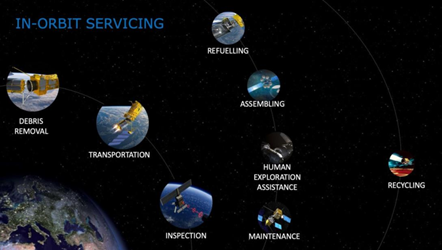
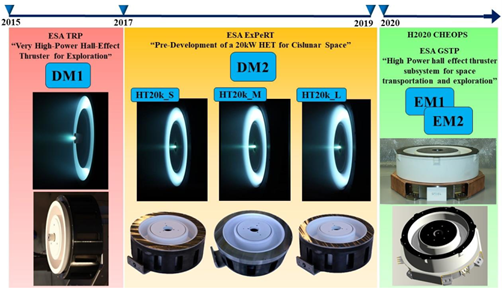
Impact
The ASPIRE project will build upon the heritage gathered by SITAEL and its partners, mainly AST, on the development of a 20kW Hall thruster system through several relevant concluded and ongoing projects. These projects allowed the development of an advanced Engineering Model (EM) 20kW Hall thruster unit, EM model FMS and a breadboard power architecture and units, at the TRL 4 to 5. The target TRL in ASPIRE is 5-6 through the development of an EQM thruster unit and FMS, together with the elegant breadboards of the power architecture representative of critical functionalities.
ESA’s overview of various in-orbit servicing mission scenarios [@ESA.int]
Expected Impact:
- Develop, in the mid-term, the European capacity to compete in the worldwide arena of electric propulsion satellites and missions and be in time to market
- To substantially increase medium- and long-term competitiveness of existing Electric Propulsion System technologies with a technology and application-driven approach
- To pursue developments which shall be mainly market-oriented, beneficial at system level and with a strategic view to long term needs; also, to anticipate ambitious long-term market evolution and strategic opportunities, so that the developed Electric Propulsion Systems could create new markets and shape existing ones
- To enable medium- and longer-term applications: Space Transportation and Exploration/Science. The ASPIRE aims to ensure that Europe will have the propulsion capacity and technology base to lead its own missions of these types to Moon in the near-term, and to Mars and beyond in the longer-term.
Partners
The ASPIRE consortium has gathered together industrial and academic partners with unique assets and expertise in
the project areas to reach the project objectives.

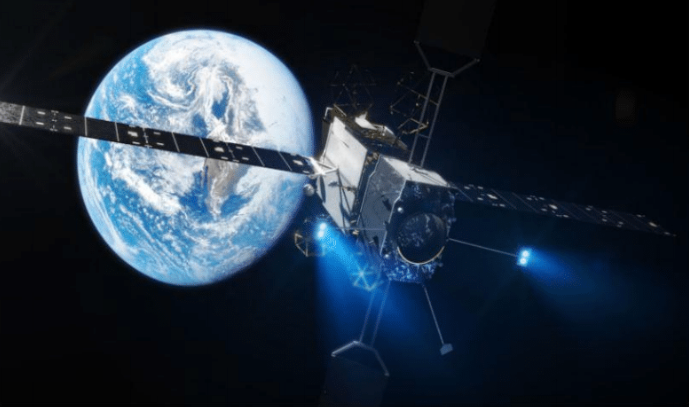
Space endeavours forecast for 2030
Rendering of Northrop Grumman’sMEV-1 spacecraft attached to a satellite for life extension. The actual docking with the Intelsat-901 telecom satellite occurred on Feb. 25, 2020. The spacecraft used four Hall thruster systems(Aerojet Rocketdyne’s 5kW-class XR-5).[@N. Koga,SpaceFlight Insider]
Electric Propulsion
On the left: Mars Transport Vehicle(bottom left)[@news.com.au] // On the right: Operation with xenon(left) and with krypton (right)
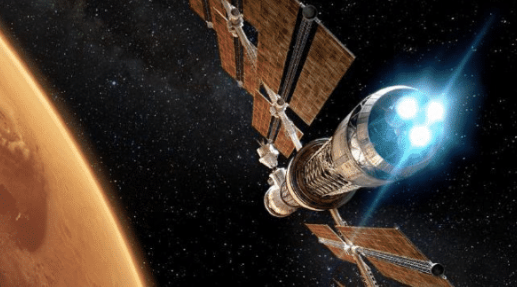
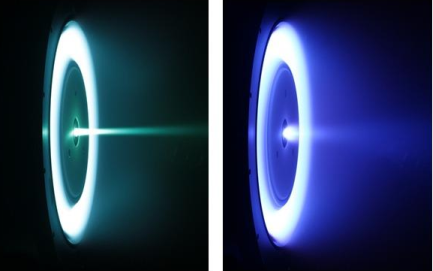

SITAEL (IT)

MICROTEST (IT)

UNIVERSITA DI PISA (IT)

THALES ALENIA SPACE (FR)

IMPERIAL COLLEGE LONDON (UK)

ADVANCED SPACE TECHNOLOGIES (DE)

UNIVERSIDAD CARLOS III DE MADRID (ES)

SME4SPACE (BE)
Interested to know more
about ASPIRE project?
Do not hesitate to reach us out